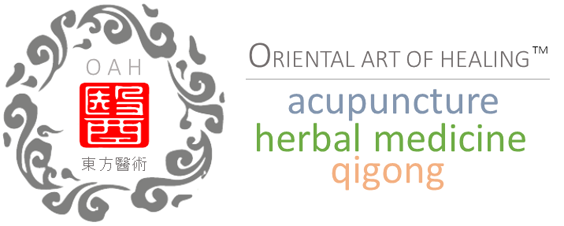
TCM defines disease as imbalance of the body in Yin and Yang, impairment of Qi and/or blood flow, disharmony among organs, conflict of human physical, spiritual activities and the nature-social environments. The diseased conditions are categorized (or diagnosed) as distinctive so-called “Zheng” or “Pattern”. The “Pattern” is determined by analyzing the information, which is collected via the four basic diagnostic techniques, namely “inquiry”, “listening & smelling”, “observing” and “touching/palpating”.
Traditional Chinese medicine views the human physical body, mental and spiritual activities, natural and social environments as whole. Factors from all these aspects can be responsible for a disease to the vulnerable individual. Therefore, TCM believes that all clinically experienced symptoms and signs, (including those without scientifically detectable evidence or scientific explanations), should have the corresponding external or inner causes, which need to be addressed and properly treated. On the other hand, the traditional procedures may not be able to diagnose or locate the abnormalities defined on the Western medical criteria, e.g., certain early-staged cancers, which may be better detected by the diagnostic interventions of high technology. Therefore, in China, it is said that “Western medicine locates the disease and Oriental medicine treats it.”
The therapeutic strategies are made according to the disease patterns. These include re-balancing Yin-Yang, comforting the disharmony organs, restoring Qi and Blood flow, tonifying the weakened organs, removing the excess, etc. This is all accomplished through acupuncture, herb medicine, Qigong, Tui Na, and so on. Traditional Chinese medicine stresses heavily on preventive measures. A maxim in TCM says, “A top healer treats those when the disease has not yet developed.”
The beauty in the Oriental medical care is known as “personalization”. Since each individual is unique with physiological constitution, personality, emotional activity and social-economic background, there is no identical disease “Zheng” or “Pattern” in two patients with seemly similar or same clinical diseases. Moreover, the “Pattern” can change in the same patient based on the interaction between the energy Qi and the pathogens in different time courses. This requires the therapists to have “good eyes” and good communication with their patients, in order to reach such a “real time” personalized disease “Pattern” and thus a personalized treatment regimen. TCM is therefore referred as an art of healing, which we believe will be continually explained and understood by modern science discoveries.

